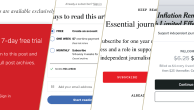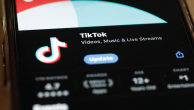Introduction and Summary
The numbers are still modest but the Internet is beginning to play a role in the news habits of a significant number of American consumers. Over one-in-five Americans now go online — either at home, work or school. Nearly three-fourths of this group sometimes get news from the World Wide Web or from a commercial service.
About 21 million Americans (12% of the voting age population) obtained political or policy news from online sources this year, and of them about 7 million (4%) used the Internet and/or commercial services for information about the Presidential election. The Pew Center’s post- election survey found that 3% of voters on election day said that Internet sites or online services were their principal election news source and as many as 10% of voters said they got some information about the election from the Internet.
While the political campaign was of interest to many online news consumers, even larger electronic audiences — more than four-in-ten online users — regularly follow news of science, health, and technology on the Internet.
As in the past, there is little indication that online news use is supplanting traditional media behavior. Americans who get news on the Internet or from commercial online services read, watch and listen to the news as much as the public at large. In fact, a fair amount of crossover between old and new media is apparent; 42% of online news users said they go on the Internet to follow up on stories they see in newspapers or on TV. There is also substantial incidental consumption of online news. As many as 53% of users said they read news in the course of going online for other purposes.
In the 1996 Presidential campaign, users said they were looking for things not available from traditional media sources and liked the convenience of getting political material online. But in a drama-less election, there was little indication that information obtained on the Internet or on commercial services was particularly compelling to users. Only about one-in-four said they found such information very helpful.
A surprisingly high proportion of election news seekers said they went online for information about Congressional (33%) and local (24%) races this year. Online users are younger on average than the general population and usually not interested in local news, but local online news sites were called up relatively often by the end of the campaign and were well rated for their helpfulness as information providers.
These are the findings of a series of surveys conducted over the course of the year by the Pew Research Center that tracked the use of online sources for information about the campaign. The project, which followed up on our 1995 survey of “Technology in the American Household,” culminated with an in-depth national survey of 1,003 online users in October that explored motivations, patterns of use, and attitudes toward campaign news and information found online.
[NOTE: “Americans Going Online… Explosive Growth, Uncertain Destinations.” Times Mirror (now Pew Research) Center for the People & the Press, Washington DC. October 1995.]
The Web sites of major news organizations — both newspapers and television networks — were most often cited as sources of political information, followed by candidate sites and local news sources. About one-in-four rated them as very useful. The Web sites of national news organizations, along with local news sites, received the best ratings; about one-in-three described them as very useful. Of the election-specific sites, CNN/Time AllPolitics attracted the most campaign news consumers (40%), followed by PoliticsNow (16%). Of the partisan sites, Clinton/Gore was better rated than Dole/Kemp. But the House of Representatives home page got a higher rating than the White House Web page.
Half of those who sought election news online (56%) downloaded political news or information from the Internet or from a commercial service. One-in-three took part in public opinion surveys (34%), and a similar percentage participated in online discussions about the election.
A significant number of online election news seekers can be categorized as political junkies. Fully (38%) sought campaign news because they enjoy following politics. However, more of them (59%) said they were motivated by a belief that it is their civic duty to follow politics. About one-in- five (17%) went online to get political news and information for work or school assignments.
The survey found few partisan differences between those who went online for political information and the public at large, particularly when the demographic profile of the online audience is taken into account. Online users are about as interested in politics as most Americans, but are substantially more knowledgeable. For example, 71% were able to identify Bob Dole as the candidate who called for a 15% across-the-board income tax cut compared to 59% of the general public.
Other Highlights of the Report:
- The biggest and perhaps most significant change since 1995 is the increased use of the World Wide Web. Nearly three out of four (73%) report having used the Web, compared to only 21% then. Web use also appears to be more frequent: 51% said they used the Web either yesterday or sometime in the past week, compared to 12% last year.
- Internet users are going online at slightly higher rates than last year. More are seeking information about finances, travel and entertainment, and more are going online for pleasure.
- The largest increase in online activities has occurred among users who go online to get entertainment-related information (30% do this at least weekly, up from 19% in 1995) and for financial information (22%, compared to 14% in 1995).
- How Americans go online has also changed significantly in a year. Twice as many people subscribe to an Internet access provider now. As a consequence, subscriptions to some of the major commercial online services have fallen off. The exception is America Online.
- America Online has emerged as the dominant commercial online service, but many online users are bypassing commercial services in favor of Internet access providers.
- E-mail use has increased to 77% of online users (who send or receive e-mail at least once every few weeks) from 65% in 1995.
- New users more often go online solely for pleasure, compared to more experienced users, and are more apt to spend time browsing than looking for specific information.




